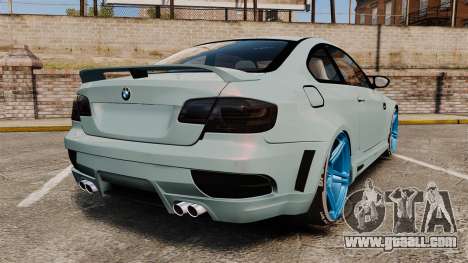Instrukciya Stanka Modelj 16b20p 061

Cambridge ielts book 6 listening mp3 free download. Cambridge IELTS 6.pdf + mp3 audio free download Online GRE Revised, GRE Online,All about Revised GRE, free GRE Books pdf download,GRE Tests online, GRE vocabulary,GRE Quantitative questions,free GRE Videos online,GRE Study Guide,gre practict. The best place to download Cambridge English Official IELTS 6 with answers (PDF +Audio) free, quickly and easily.
BELT RAKES Our belt rakes have over time proven themselves with reliable and precision work. They are an essential piece of machinery on all farms, big and small. Povrsina (ha) 898 471 435 132 563 1.059 625 754 682 626 942 2.229 449 225 1.517 606 945 639 805 912 579 1.049 544 1.200 779 229 2.484 1.136 1.850 1.200 631 1.446 982 1.534 809 297 2.909 1.484 201 804 554 1.427 1.767 599 779 54 1.142 106 621 1.063 506 189 1.061 607 3.920 98 1.676 494 1.180 4.113 317 336 210.
• 1,453 cc (RS, RS20) • 1,897 cc I4 (RS30) • 1,491 cc I4 Dimensions 2,530 mm (99.6 in) Length 4,285 mm (168.7 in) Width 1,679 mm (66.1 in) Height 1,524 mm (60.0 in) 1,152 kg (2,540 lb) The Crown was introduced in 1955 in Japan to meet the demands of public transportation. The Crown was intended for private purchase, while the served in a commercial form as a taxi, both with the same 1.5 L engine used on their previous car, the Toyopet. The front doors open conventionally, and the rear doors are ', a feature also utilized on the, Toyota's first car. Small engine displacements were used to keep the vehicle affordable, as the Japanese Government began to impose an to help develop and maintain a national transportation infrastructure in 1950.
The appearance of the Crown shows some similarities with the European. The Crown was much more popular than the Master due to the more compliant suspension of the Crown, and while the Master was intended for taxi service, the Crown was more accepted by the market over the Master, and more Crowns were sold into taxi service than the Master.
The Crown was designed to replace the Super but Toyota was not sure if its independent front coil suspension and its suicide type rear doors were too radical for the taxi market to bear. So the Super was updated, renamed the and sold in tandem to the Crown, at Toyota Store locations. When sales of the Crown proved worthwhile, the Master was discontinued in November 1956 after being in production for only one year, and production facilities for the Master were transferred to the Crown. While the Master was discontinued the commercial vehicle based thereon, the Masterline, continued to be offered (utilities, wagons and vans) until 1959. A six-door wagon known as the was shown as a concept car at the 1961. It did not go into production. In December 1955 the Crown Deluxe (RSD) was introduced, a posher model equipped with a radio and heater as standard.
:origin()/pre04/ee9f/th/pre/f/2014/163/0/a/stanced_mercedes_c124_coupe_by_nwfoto-d7m3alh.jpg)
The initial RS model received a cosmetic update in 1958 to become the RS20, now with hooded headlights and a single-piece front windshield. In October 1959 Japan's first passenger car, the Crown Diesel, was introduced. Its C-series engine only had 40 PS (29 kW). In October 1960 the 1.5 L R engine was complemented by the larger 1.9 L (1,896 cc) engine for a model called the RS30, originally only available in the Deluxe version. The 1900 was also available with the new two-speed Toyoglide automatic transmission. In April 1961 a Crown Standard 1900 was added.
Its coil and double wishbone was a departure from the leaf sprung front suspension used on most previous models but was similar to the independent front suspension used on the 1947 Toyopet. The live axle rear suspension was similar to that used on most of the previous models (unlike the trailing arm rear suspension used on the SA). Taxi versions were produced and beginning in March 1959 commercial versions of the vehicle were also available, as an estate wagon and a three- or six-seater. These took over the 'Toyopet Masterline' name in the Japanese domestic market, but usually received 'Crown' badges in the export. The 'Crown' name was previously in use by the limousine manufactured by in the early 1950s. In 1958 it introduced a ball joint suspension. Production of the Masterline pickup started in April 1957 by the former.
In August 1957, three Toyota delegates with the intent to establish a sales company in the United States introduced a white and black Crown and Crown Deluxe at a public relations event attended by dealers and the media. Both models were constructed with 50% thicker steel than the average American car at the time and the black Deluxe model was nicely appointed with lots of chrome and luxurious items like a radio, heater and whitewall tires which prompted the press to liken it to a 'baby Cadillac'.
This promising initial showing along with the strong reputation of the Crown in Japan gave Toyota the confidence to pursue exports to the United States despite known high-speed performance issues. As a publicity stunt to demonstrate the car's reliability, Toyota staged a campaign common to American automakers: a coast-to-coast endurance run from Los Angeles to New York. The Toyopet was barely able to limp into Las Vegas before the project had to be called off. [ ] Toyota's first export to the United States began with 30 Crown Deluxe's in June 1958 after establishing Toyota Motor Sales USA the previous October, the first directly managed retail dealer (Hollywood Toyota) the previous February, U.S. Wholesale and import companies, and a parts warehouse in Long Beach. Toyota also signs up 45 dealers to sell cars in its initial year, growing to 70 dealers by 1960 and 90 by 1962.